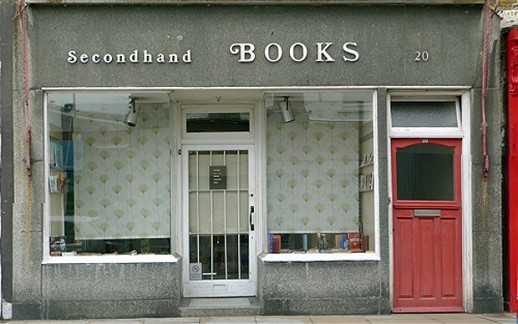by Ian Rawes
Nunhead station in south-east London is on high ground and from the platform you can look right across the city towards the Hampstead and Highgate ridge. This can be an invigorating sight in the brave air of a spring morning, but during August a mustard-coloured photochemical haze covers the central Thames basin. You can put up with such a grubby baptism; still, do you need it?
Yet the railway suburbs are all worn and shabby in the bright light, crumbling away, fly-tipped rubbish in corners. There’s not much to do except drink. Restlessness and an interest in half-remembered places are good enough reasons not to hurry home from work. It won’t get dark until ten, the right time of year for city centre loitering. One of my pleasures is scouring remaindered and secondhand bookshops: Quinto and Any Amount Of Books on Charing Cross Road, or the Secondhand Bookshop on Lower Marsh, where someone likes to shelve Penguins of Machiavelli’s ‘The Prince’ in the self-help section.
Early in August I got my hands on a 1920s edition of ‘The Ballad of Reading Gaol’. The attraction isn’t in the poem itself, although some lines resound. Imagine hearing ‘He does not win who plays with Sin in the secret house of Shame’ as a tube announcement in place of the summertime reminders to carry a bottle of water with you. It’s the illustrations by the American designer John Vassos which were sought-after. This one goes with ‘And, as we prayed, we grew afraid/Of the Justice of the Sun’:
Wanting a break from the traffic fumes, a friend and me spent an evening walking along the Thames from London Bridge to Deptford. All river walks in London are pretty good and this route is one of the best. By Southwark Cathedral we saw a busker with a wooden greengrocer’s crate filled with different-sized glasses. He played them by running his fingers around their tops and melodious sounds floated up. The glasses looked like unplanned donations from nearby pubs and bars.
The tourist crowds go as far east as the Design Museum and no further, even though there are pleasant riverside pubs, small parks, a houseboat colony, old streets and tumbledown warehouses that have so far escaped the wrecking ball. The new flats on the north shore make the Thames into a huge processional avenue curving slowly out of sight.
At the end of month was the Notting Hill Carnival. The last year I went was 2008 when I made some recordings, but nearly all of the sound systems were too loud for the mics. Many of the streets are narrow and there’s only so far you can hang back before you find yourself in the earthquake zone of a competing system. This year I tried out some different mics.
At 11am the Jouvert parade of steel bands and paint bombs had been and gone hours before, leaving the Ladbroke Grove tarmac splashed with colour. All Saints Road had four systems at full power, Channel One was still around, Saxon I couldn’t find, others were new. But, once again, none of the recordings turned out well with horrible harmonic distortion throughout. Next year a special set of mics will have to be hired to do the job.
Field recording is often like that and it isn’t really a cause for disappointment. You have to be patient and think in months and years rather than days. Pleasure comes from having the freedom to do that.

